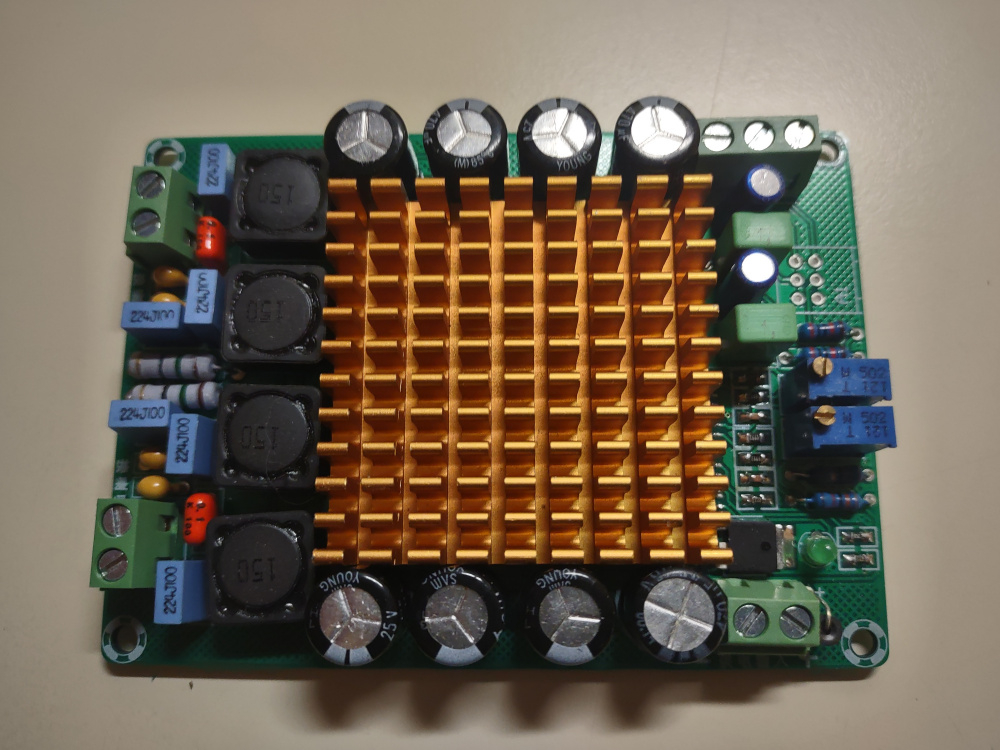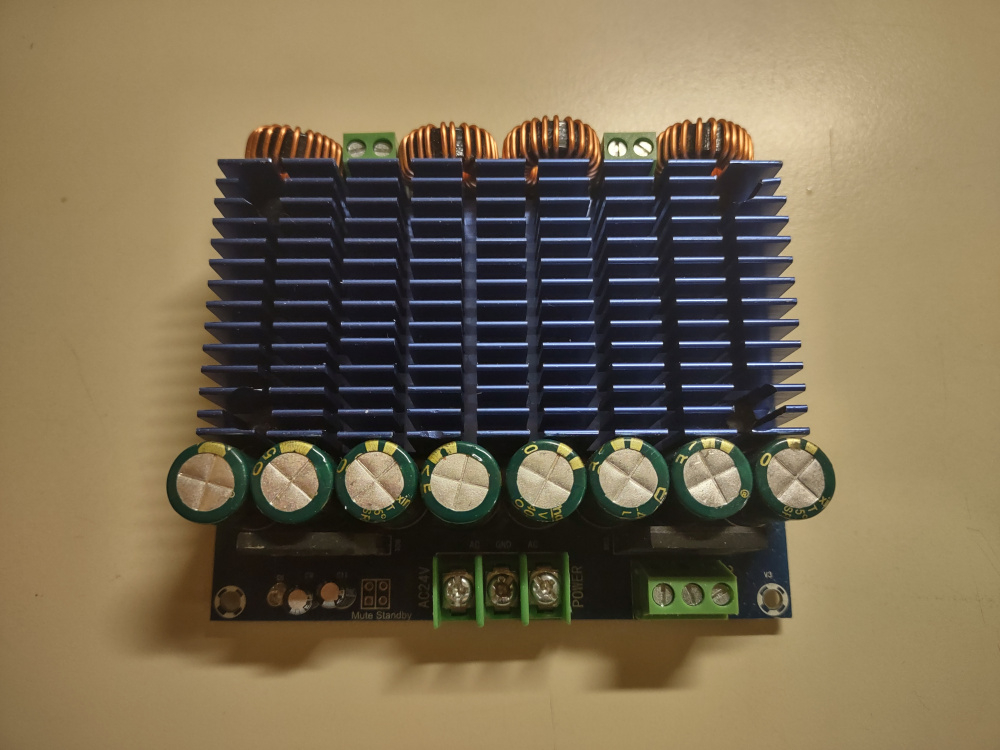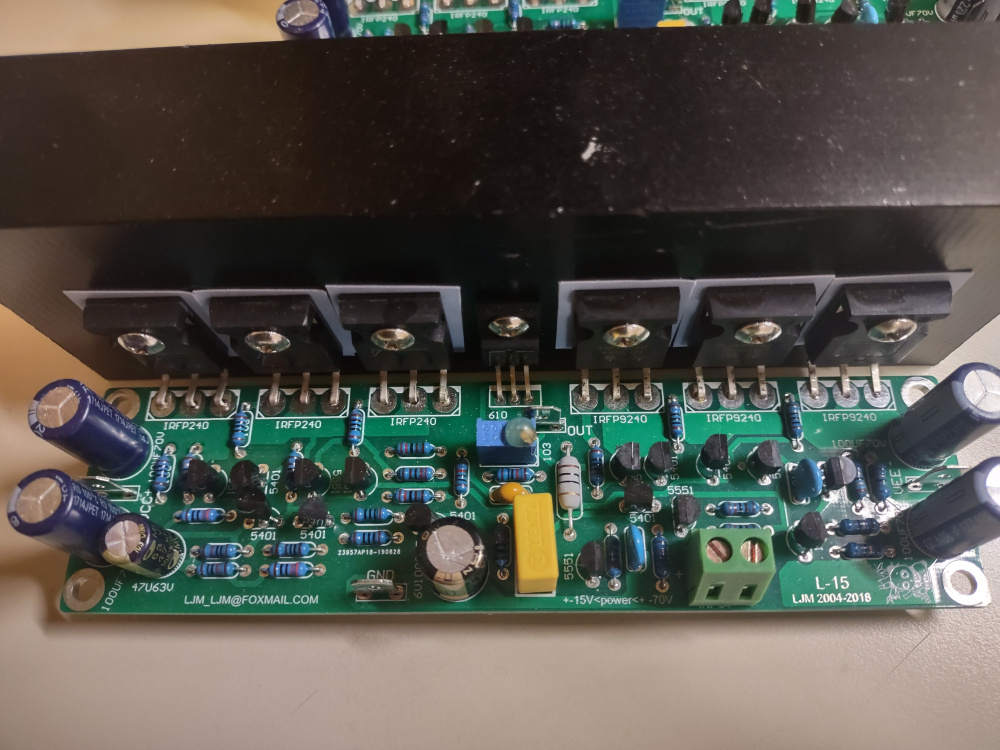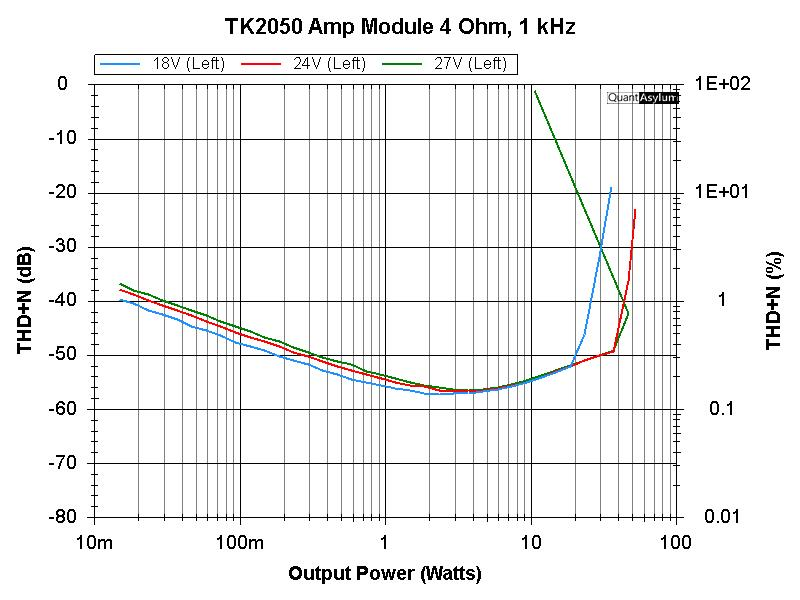Site Links
Howdy, Stranger!
It looks like you're new here. If you want to get involved, click one of these buttons!
Quick Links
Categories
In this Discussion
Who's Online (0)
Free Amp Module Bonanza (+ Tests!)
Well I've come to the conclusion that several DIY amp modules I've picked up over the years are just plain tired of accumulating dust. What does this mean? A time has come to offer some free amp modules at the cost of shipping. I'll detail the four below, and if interested, send me a PM with a zip code and I'll shoot you a rough cost to ship. That's it, free, just cover the cost of shipping these bad boys to your location of choice! Without further ado, to the bonanza!

TK2050 module, low-power tri-path board. I've listened to this one, not a lot of power, but nice IMO. Like this one on amazon (for more details) https://amazon.com/Taidacent-DC12-20V-Amplifier-High-Power-Audiophile/dp/B08NW21BH3

TDA8954TH dual parallel setup board, not tested or used at all. Some details here: https://ebay.com/itm/122750491097?hash=item1c947fd9d9:g:XAYAAOSwOTlZ3src

(Probably Gone) 2x LJM L-15 assembled mosfet AB module I picked up on ebay (untested/used), as this: https://ebay.com/itm/254603374910?hash=item3b478b313e:g:K9IAAOSwaCVcgHGz


Yuan Jing TDA 7293 x3 parallel mono amplifier: https://yuan-jing.com/tda7293-x3-btl-mono-power-amplifier-board-255w-a
And there we go! If anyone would like one, just PM me on the forum with a zip and I can let you know a rough shipping cost. All priced to move at zero dollars and zero cents! Paypal preferred and I won't stop you from adding in a 5$ tip at the end towards the climbing cost of coffee!




Comments
PM sent re: LJM L-15
All gone, thanks!
TK2050 is getting a workout today
Sehlin Sound Solutions
Glad to see it put to good use! I'd love to see your results if you don't mind sharing.
The amazon link suggested a 12-18VDC operating voltage, so I started out in that range doing some power vs. thd+n within that voltage range. Here are the 8 ohm and 4 ohm results.
It's still doubling power at 4 ohms at 18 volts, so it might be worth trying higher voltages. I noticed that some other variants of that board have recommended voltages of 24V or 30V and that you sent a 27V supply. I also think that the old Dayton DTA-100 and 120 amps used that amp chip at 24v.
Sehlin Sound Solutions
Hey Scott, how do you like your Quant Asylum rig? I assume you have a 401 analyzer and their load box. I've thought about getting one the last couple of years, but they were either out of stock or I forgot about them.
Thanks Scott, yeah definitely some mid level performance. Yes, I ran that module with 27V power with no issues, not that I recall pushing it hard at all.
I have the newer models QA403 and QA451B. I like them - not perfect, but pretty easy to use for sweeps, etc. One could get better resolution with something like the e1da cosmos adc, a cheap dac, a low pass filter for class d amp testing, some good load resistors and an attenuator - but it's not that much cheaper and much less convenient. I've got some beefy load resistors for when I am ready to test higher power amps - but I have a little work to add some additional attenuation when I do that without introducing more distortion.
It is nice to be able to compare vintage with modern electronics and answer some basic questions like - is this thing any good, are the tone controls flat at the center position, etc? I've got a few results posted on my web page, but have a lot more that I need to post.
Sehlin Sound Solutions
I'll get some tests run at higher voltages this week. Agree about the mid level performance. It tests a lot like the Dayton DTA-100/120 and the SMSL Q5 Pro, which aren't amazing, but good enough for a lot of applications and better than some options.
Sehlin Sound Solutions
I'm quite envious of your QA403...especially as I'm currently fighting with an install of Audio Analyzer Suite for an Analog Discovery on a different laptop.
I have more results on the TK2050. I tested thd+n vs. voltage starting at 18 volts this time and going up from there.

At 8 ohms, this module will produce 20-25 watts per channel at 1kHz, 8 ohms when driven with a 24V supply. Upping that to 27V gets you 30 watts per channel.
At 4 ohms, we are running into the board's protection limits - good that it actually has some. With a 24V supply this module will comfortably do 40 watts per channel at 1 kHz. Pushing the supply voltage higher doesn't really bring more power, and current limiting starts to kick in around 50 watts per channel at 4 ohms.

Based on this, I would recommend 24V as a reasonable operating voltage. Pushing to to 27V would make sense if using this board to build into something like a boombox with an 8 ohm nominal impedance. The rest of my measurements are at 24V.
Sehlin Sound Solutions
I'll go through my standard set of measurements. The first one I do is approximately the same as the dashboard used by Amir at Audio Science review for ease of comparison with the amps tested there. I run the amp at an input level to produce 5 Watts per channel into a 4 ohm load with a 1 kHz signal. I measure distortion out to 45 kHz, which I think is also the same as what Amir does.
SINAD, reported at ASR is equivalent to -1 times thd+n in dB, so SINAD for this is down in the 50's and different for each channel. When ASR tested the Dayton DTA-120, they got a SINAD around 59 decibels, which is equivalent to the good channel here. Distortion is dominated by odd-order products, but this board seems to control higher order distortion better than the DTA-120. This would rate as "poor" on the ASR spectrum, but is cleaner than some of the super-cheap Kinter and Lepai stuff I have tested.
Signal to noise ratio shows pretty low, but is unweighted. With A-weighting, it would be up in the 90's and higher at full power.
Sehlin Sound Solutions
The frequency response is pretty typical of class d or t amps. High frequency filtering usually leaves either high frequency ringing or roll off depending on load impedance. This module is pretty good, with a little ringing at 8 ohms and a little roll off at 4 ohms - but within +/- 1dB out to 20 kHz.
Sehlin Sound Solutions
Here is the standard thd+n vs. power graph.
We comfortably get 20 WPC into 8 ohms and 40 WPC into 4 ohms. the left channel measures cleaner than the left, which showed up on the dashboard as well. This is a usable amount of power. Spec is 25W and 50W at 8 and 4 ohms respectively. It can produce that, at higher levels of distortion. Distortion starts rising at lower power levels into 4 ohms than 8 ohms. I also like to look at distortion at different frequencies (both channels driven, but only plotting the left channel to keep the plot less busy).
Pretty much all class d or t amps have increased distortion at high frequencies, so this is not all that unusual. What is maybe a little unusual is that distortion is rising through the 500 Hz through 5 kHz range. Also, power runs out early at 20 Hz (30 wpc vs. 40 wpc at higher frequencies). The amp board protection seems to kick in a little earlier at higher frequencies.
Sehlin Sound Solutions
Almost all of the older Tripath class D have that early climbing distortion that vanishes higher up (past 5k or so) even some newer TI stuff like the TPA3116 have the same. I'm not sure of the cause though.
The last measurement I have is the multitone test, which shows a few things at once.
ASR uses this graph to report bits of resolution (6 dB = 1 bit). At its best, around 100-200 Hz, this module has a noise/distortion floor about 90 dB below the level of the test signal, which is 15 bits (nearly CD quality, which is pretty good). The issue is that one can clearly see the loss of resolution through the midrange and above about 3 kHz, there is only about 10-11 bits to be had. As a sanity check, ASR did post a multitone test for the Dayton DTA-120, and the results were very similar to this.
Final thoughts. This amp module performs a lot like the old Dayton DTA-100/120. It has a usable amount of power for many applications and would be a step up both in power and clarity from the early mini-amps (older Lepai and Kinter offerings for example). This would also represent a step up in performance from the built in amplifier sections in a lot of mobile audio head units. These boards still cost between $35 and $45, so the value proposition vs. TPA-3116 based boards is not very good as those have similar power, a little less distortion, and generally cost less. I had a DTA-100 back in the day, and it filled a market need until the TPA-3116 amps came along.
Sehlin Sound Solutions
Here is the same test for a common TPA-3116 amp board. The main differences are that the TPA-3116 doesn't seem to have any increased distortion at 500 Hz and 1 kHz - but the TK2050 is cleaner at lower power levels and high frequencies.
Sehlin Sound Solutions
I actually still have what's left of an old Dayton DTA-100.
The TK2050 nomenclature is a combination of the Tripath TC2000 signal processor and TP2050 power switch bridge. Both can be found on the backside of the DTA-100 circuit board.
The TP2050 chip was heatsinked directly to the extruded aluminum case. The case includes rails for the circuit board to slide into, eliminating the need for mounting screws and/or standoffs.
Interestingly, the TK2050 board Jason sent fits right in - isn't that convenient!
Sehlin Sound Solutions